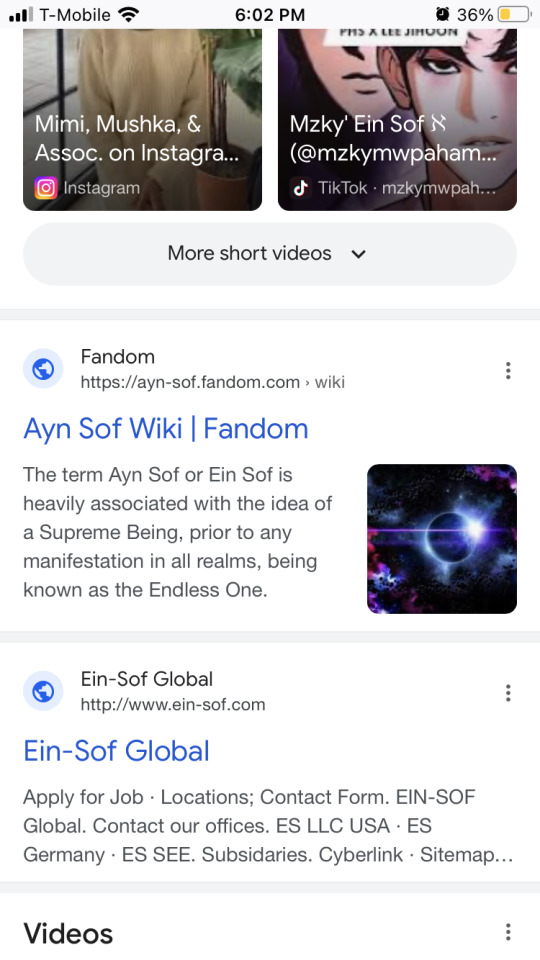#ayn sof
Explore tagged Tumblr posts
Text

To The True Within
In silence deep, where whispers dare not tread, Where ocean’s murmur fades to tranquil hum, Unveil thy soul, and let all masks be shed, As waves in reverence bow and gently come, To mirror thee, unbound by self or sum.
O endless breath, thy pulse of life unmasked, A rhythm pure, that ebbs and flows with grace, In every sigh, thy being is unasked, Yet sings its truth in each unfettered pace, A dance unchained, a step none may replace.
The sea takes heed, her waves a choir stilled, In awe of thee, who moves as light through dark; Unbidden love, within all senses filled, The heart’s deep song, which leaves no trace, no mark, But binds the stars, as embers to their spark.
Through every rise, in every deep descent, Thou art the constant, soul beyond all form; Not bound by day, nor to the night’s intent, A spirit vast, untouched by time’s cruel storm, In love resplendent, timelessly reborn.
O seek not far, for thou art always near, In breath, in pulse, in ocean’s yielding sweep; No bounds constrain thee, nor can shadows sear, For truth lies bare within the vastness deep, Where love abides, in silence soft and steep.
— Mle. AainaA-Ridtz A R, To The True Within
#aainaa-ridtz#tasawwuf#amour#voyage#ayn sof#citation d'amour#sainte communion#being real#transcendance#being#poetry#poeme#To The True Within
5 notes
·
View notes
Text
“God's ubiquity evokes oceanic imagery for mystics of all traditions. As a drop of water dissolved into the sea, so we are waves in an ocean of God. And, like fishes unable to comprehend the ocean within which they live, we too must push our language and imagery to describe the divine All. The most common word Jewish mystics choose to describe God is ‘Nothing.’ However, as we shall see, the God they describe is much more than nothing…
[The word Ayin] connotes not the absence of being, but the absence of any boundaries — that is, no ‘thing,’ a nothing that encompasses all creation. Ayin is therefore the font of all being, the substrate of creation. The Kabbalists called God Ayn Sof, endless. Not only can’t you own it, you cannot alter it, change it, or affect it in any way whatsoever. You cannot point to it. You can't even accurately say as much about it as we've already said. It is as if we were waves and it were the ocean. You and I, this book in your hands, the trees, the people we love, even the love itself, all of creation-they are all the waves, yesh, made of that ocean of Ayin, manifestations of that great underlying nothingness and oneness of all being.”
— Rabbi Lawrence Kushner. The Way into Jewish Mystical Tradition, pages 17-18.
62 notes
·
View notes
Text

Etz Chaim 'Celestial Tree of Life'
THE KABBALISTS' CONCEPTION OF THE NATURE OF GOD
The Kabbalists speak of God in two ways which in no wise impair the unity of their thought. When they attempt to define God, when they distinguish His attributes, and wish to give us a precise idea of His nature, they speak in the language of metaphysics, with all the lucidity permissible in matters of such nature and by the idiom in which they are expressed. But sometimes they represent the divinity as a being which can not be comprehended at all, a being that lives always above all the forms with which our imagination may clothe it. In the latter case all their expressions are poetical and figurative, and then they combat, as it were, imagination with the weapons of imagination; then all their efforts tend to destroy anthropomorphism by giving it such gigantic proportions, that the frightened mind can find no term of comparison, and is compelled to rest in the idea of the Infinite.
The Crown is the source from which an unending light springs forth, and therefore the name 'Infinite' אין סוף (Ayn Sof), to designate the Supreme Cause for in that state it has neither form nor countenance; therefore, there is no means of comprehending it, and no way of knowing it; and it is in this sense that it is said: 'Meditate not upon the thing that is too far above thee, and investigate not what is covered from thee.' Then a vessel comes into existence, as restricted in dimensions as a point--as the letter י (Yod)--in which, nevertheless, the divine light penetrates. This is the source of wisdom, it is wisdom, by virtue of which the supreme cause takes the name of the all-wise God. After which it constructs a great vessel like the sea, called the intelligence, whence the name of God the 'Intelligent.' We must know, however, that God is good and wise by virtue of Himself; for wisdom does not deserve its name because of itself, but because of Him Who is wise, and Who produces wisdom from the light emanated from Him. Neither is intelligence conceivable by itself, but through Him Who is the Intelligent One, and Who replenishes it from His own substance. He need only to withdraw to let it dry out entirely. In this sense we should also understand the following words (Job XIV, 11): 'The waters run off from the sea and the river faileth and drieth up.'
"Finally, the sea is divided into seven branches, and from these result the seven precious vessels called Mercy or Grandeur, Justice or Strength, Beauty, Triumph, Glory, Kingdom and the Foundation or Basis. For that reason He is called the Great or the Merciful, the Strong, the Magnificent, the God of Victory, the Creator to whom belongs all glory, and the foundation of all things. This last attribute sustains all the others, as well as all the worlds. Last of all, He is also the king of the universe; for all things are in His power. He can diminish the number of the vessels, and He can increase the light which breaks forth from them, or the contrary if He deems preferable."
-The Kabbalah or, The Religious Philosophy of the Hebrews by Adolphe Franck
32 notes
·
View notes
Text
Time to go Upstairs.

*mingles with the hubbub of demons swarming up the escalator towards Heaven*
Hi. How’re you doing. Hi. Excuse Me. Just getting through. Pardon. Hi. I’ll take that.
*takes a random clipboard*
*strides through the crowd even more purposefully than before*
*enters the back stairway*
*saunters decidedly Upwards*
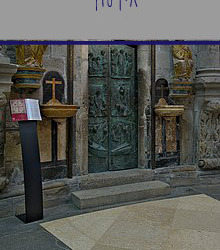
First floor, Ayn Sof.
My old Throne.
Or... Her Throne.
Mine now.
Nobody even around to stop Me.
*places a Hand on the Door*
6 notes
·
View notes
Text
why is there an ayn sof wiki fandom..
2 notes
·
View notes
Text
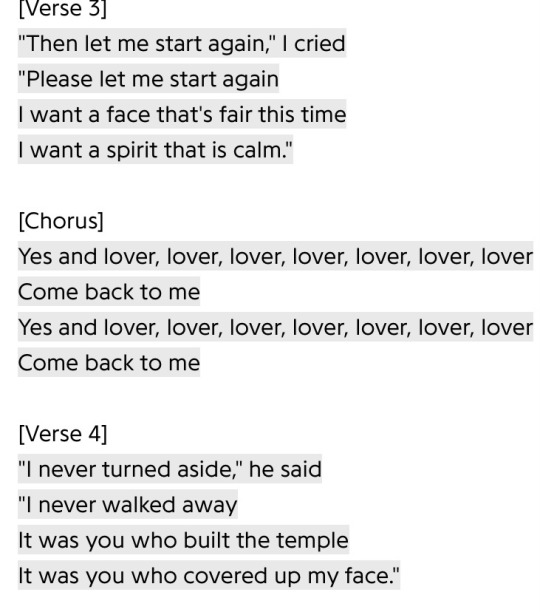
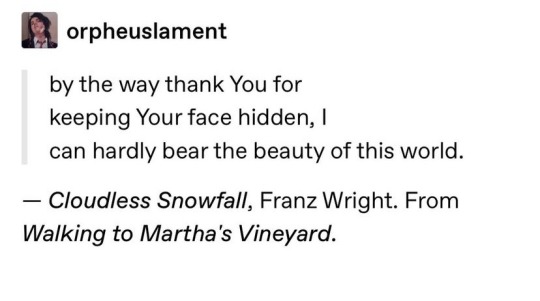
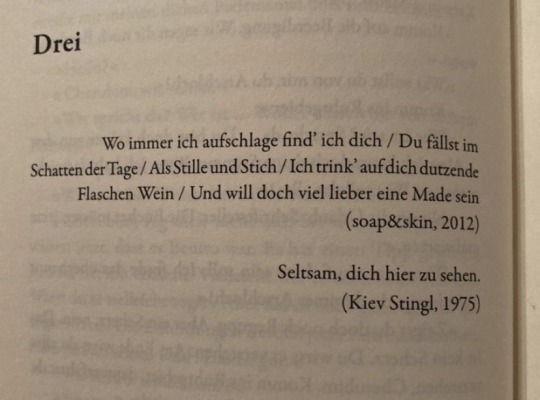
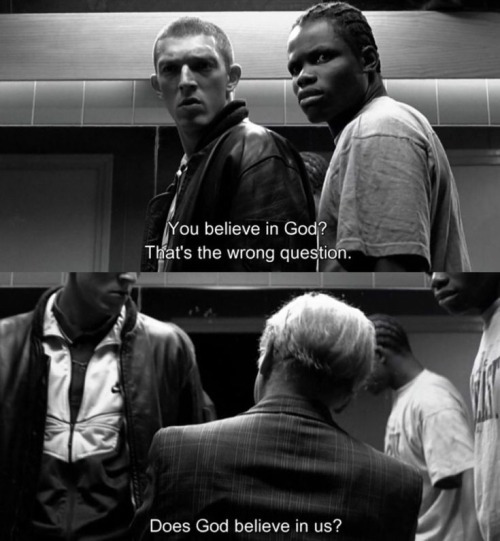



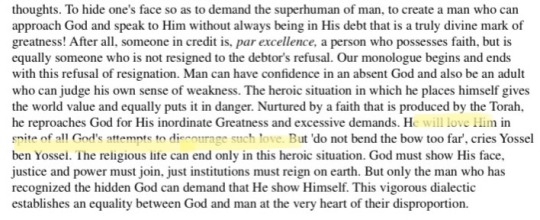
on believing in g-d despite
12 notes
·
View notes
Text
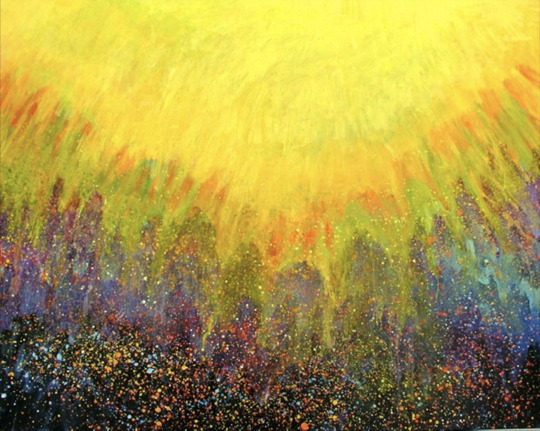
Thelma Appel, To The Endless Light (Ayn Sof Or), 2012, Acrylic on canvas, 48 x 60 cm.
150 notes
·
View notes
Photo
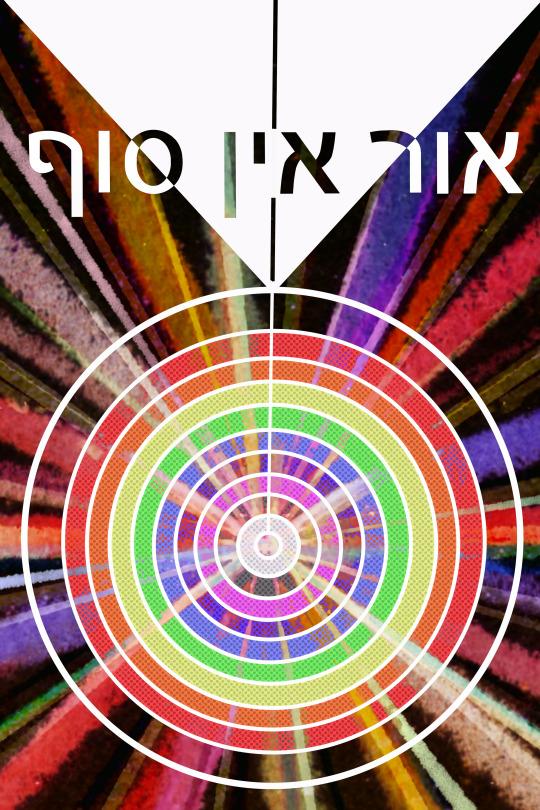
TzimTzum....the Contraction...the Breaking of the Vessels...and the Light Without End (Ohr Ayn Sof)
3 notes
·
View notes
Text
Over The Rainbow: Basking in God's Light, Celebrating Diversity
Over The Rainbow: Basking in God’s Light, Celebrating Diversity
Rabbi Stephen Weiss Parshat Noah 2012
That light is always flowing from God and brings our world into being at every moment.
Somewhere over the rainbow bluebirds fly There’s a land that I heard of once in a lullaby
Everyone knows that iconic song from The Wizard of Oz. But did you know that the song was initially deleted from the film after a preview in San Luis Obispo, because MGM chief…
View On WordPress
#ayn sof#Bereshit#diversity#Drashah#genesis#Jewish#Judaism#kabbalah#light#noah#over the rainbow#rabbi#rainbow#sefirot#Sermon#shefa#Torah#unity
0 notes
Text
Ein Sof (or Ayn Sof) into Malkuth: The Endless One, No End, Unending, Becoming
Ein Sof (or Ayn Sof) into Malkuth: The Endless One, No End, Unending, Becoming
Ein Sof (or Ayn Sof) into Malkuth: The Endless One, No End, Unending, Becoming, 2014 Pen and ink Gregory B. Stewart
The Apprentice
Originally created as the major frontispiece for The Apprentice, the following is a short selection of the descriptive text that accompanied it. It reads:
Upon the frontispiece of this short work is an illustration depicting the transformative journey from…
View On WordPress
8 notes
·
View notes
Text






Je ne sais pas combien de temps je pourrai te tenir compagnie. Mon père parlait souvent de sa lassitude, des années avant de nous quitter. Maintenant, je commence à ressentir cette même fatigue. Ce n'est pas seulement physique - c'est le stress du travail non rémunéré, la lutte pour se permettre même les nécessités de base. Et non, je ne suis pas une sainte; je suis juste une femme, marchant prudemment à travers la vie, essayant de ne pas perturber l'équilibre fragile de notre monde.
Mon propriétaire ne montre aucune empathie, reflétant une vérité plus large : nous avons tous beaucoup à apprendre. Ceux qui ont pris de moi — mon temps, mon argent, avec de grandes promesses - m'ont enseigné des leçons douloureuses.
La trahison et la perfidie de ceux qui se disent humains sont aussi naturelles que de respirer.
Aime les gens quand tu le peux, et quitte-les quand tu dois. Ne garde pas de rancune, car chacun a son propre chemin. Si tu trouves la paix avec ton créateur, si tu y crois, c'est suffisant. Ceux qui t'ont fait du tort, laisse-les partir en paix. L'ordre naturel s'occupera d'eux en temps voulu.
Tout comme une graine pousse une nouvelle feuille, une nouvelle aube viendra.
Quand nous nous séparerons, tu auras tes souvenirs pour te tenir compagnie. Quant à moi, je souhaite un hiver paisible et éternel et la compagnie de Celui qui m'a accordé des richesses immenses en subtilités, en amour et en joie - des choses qui ne peuvent être achetées, même pour un trillion.
Dans une vie de cent ans ou de mille, ce qui compte le plus, c'est que nous aimions du fond du cœur, Amen.
Ce qui est destiné pour toi semblera naturel et paisible, pas forcé ou chaotique. Réfléchis à cela - un véritable alignement apporte un sentiment de facilité et de connexion. Quand quelque chose est vraiment destiné pour toi, cela ne ressemblera pas à une lutte.
Le chaos et la force indiquent un désalignement.
Cherche ce qui est harmonieux et calme. Fais confiance au flux naturel, et laisse aller ce qui apporte du tumulte. En embrassant ce qui semble juste, tu invites la paix dans ta conscience et trouves une véritable connexion.
— Mle. AainaA-Ridtz A R, Dans Un Monde de Promesses, Garde Ta Lumière
#aainaa-ridtz#sainte communion#citation d'amour#amour#voyage#ayn sof#citation du jour#Épuisement#Équilibre#Trahison#Empathie#Alignement#Paix#Amour#Vie#Spirituelle#5eme
3 notes
·
View notes
Text
Mystical Qabalah: The Ayn, Vast Face, and Small Face
The Ayn The Mystical Qabalah describes the roots of the Tree of Life as an ultimate, negatively existent substratum of pure Being that is Self-conscious and all blissful. It is described as "negatively existent" in relation to the "positively-existent" four worlds of the Tree of Life. The three roots of the Tree are named: Ayn (lit. Nothing; pronounced "ai-n" as in 'nine'), Ayn Sof (lit. Without End, or Endless; pronounced "sof" as in 'sofa'), and Ayn Sof Or (lit. Endless Light, or Light of the Endless; pronounced "or" as in 'oar'). But these are only distinctions in human thought. The negatively existent Absolute Being, or shall we say "Mysterious Unknown at the Roots of All Things," alludes to a depth of consciousness beyond Name and Form, and beyond the finite and supernal aspects of the Tree of Life. Individual consciousness cannot usually sustain this experience at length. In fact, most souls do not return from the experience in the roots. Their shells of embodied existence (qlifoth) dissolve completely, and they pass from their physical sheath (i.e. die). In Qabalah, the negatively existent Absolute Being is also called the "NOT" (Heb. Lo, pronounced "lo" as in "below"). The experience of the "NOT" finds Its counterpart in every mystical tradition. The Sufis refer to the experience as fana 'l fana (fana means "extinction"). The Hindus call it nirvikalpa samadhi. The Buddhists call it nirvana, sunyata(emptiness), satori, and anuttara samyak sambodhi (full enlightenment). The Qur'an refers to the Mysterious Unknown by the same terms used in the Torah. In Arabic, the word for the NOT is "La": this is written , which is virtually identical to the Ezra letter Ayin. The shape of the Sinatic letter Ayin is also suggestive--it is a circle. Within qabalistic literature, the foundational concept of the negatively existent "NOT" is most strongly and directly portrayed in the Sifra Detzniyutha (Book of THAT Which is Concealed). The main body of the text begins: "The Book of THAT Which is Concealed is the book of the balancing in weight. Until NOT (Lo) existed as weight, NOT existed as seeing Face-to-Face. And the Earth (HaAretz) was nullified, And the Crowns of the Primordial Kings were found as NOT. Until the Head (Rosh), desired by all desires, Formed and communicated the Garments of Splendor. That weight arises from the place which is NOT Him. Those who exist as NOT are weighed in YH (Yah). In His body exists the weight. NOT unites, and NOT begins. In YH have they ascended; who NOT are, and are, and will be." The first chapter of Lao Tze's Tao-Te Ching opens with verses that address the Mysterious Unknown and Its two aspects: "1.1 The Tao that can be trodden is NOT, the enduring and unchanging Tao. The name that can be named is NOT, the enduring and unchanging name. 1.2 Conceived of as having no name, It is the originator of Heaven and Earth; conceived of as having a name, It is the Mother of all things. 1.4 Under these two aspects, It is really the same; but as development takes place, It receives the different names. Together we call them the Mystery. Where the Mystery is the deepest is the gate of all that is subtle and wonderful."

Vast Face In all mystical traditions, the "Mysterious Unknown at the Roots of All Things" is spoken of as having both inactive (impersonal) and active (personal aspects). These two aspects are called "Faces" in Qabalah. When referring to the inactive aspect, represented by the letter Ayin, the Zohar speaks of "Vast Face" (Arikh Anafin, also Arikh Afim). It is also known as Al (lit. upon), Shomer (Witness, Guardian), Atiqa (Hidden One), Supernal Israel, the Ancient of Days, and other Names found in the Sefer HaShmoth and the Torah. In the Sefer Yetzirah, the Ayin is alluded to as the "Organ of Nakedness." "Head" (Rosh), a word that occurs in the fifth line of the first verse above, is also a Name of Vast Face. Ayin means "eye," and in the Idra Rabba Qadusha it says: "This is the tradition: Were the Eye closed even for one moment, no thing could subsist. Therefore, It is called the Open Eye, the Holy Eye, the Excellent Eye, the Eye of Fate (mazal), the Eye which sleeps not nor slumbers, the Eye which is the Guardian of all things, the Eye which is the substance of all things." (Idra Rabba 136,137) Also, "And He Himself, the Most Ancient of Ancient Ones, is called Arikh Anafin, Vast Face, and He who is more external is called Ze'ir Anafin, or Small Face, in opposition to the Ancient Eternal Holy One, the Holy of Holy Ones." (Idra Rabba 54) And, "The Ancient One is hidden and concealed. Small Face is manifested and NOT manifested. The manifested is written in the letters. The NOT on its level is hidden in the letters, And He (Hu), the NOT, is settled in YH, The upper ones and the lower ones." (Sifra Detzniyutha 4) On the Tree, Vast Face is associated with the uppermost center at the crown of the head called Sefirah Crown/Above. Sefirah Crown/Above is a condition of Pure Being, a supernal station of superconsciousness that witnesses the singular modification "I AM" or simply "I." Even this singular modification disappears in the negatively existent roots of the Tree. The Sefer Yetzirah teaches that the spheres (Sefiroth) of the Tree emanate in pairs. Sefirah Crown/Above emanates with its polar opposite Sefirah Foundation/Below. The tension between these two Sefiroth manifests the descent of the Central Column of the Tree. The unmanifest Pure Being of Vast Face in Sefirah Crown/Above is reflected in the abysmal mirror of Sefirah Foundation/Below as veils of illusion appearing as planes of existence (see Diagram). These planes are unmanifest in the most sublime World of Atziluth (Emanation). The attributes of the Ayn are reflected in this mirror as the immense I-ness of Small Face as the Creator, Sustainer, and Destroyer of the universe. These attributes appear as finite in the consciousness of the embodied soul ensnared in the illusion of separation. The energy of consciousness of Small Face manifests the planes of existence in the lower three worlds of B'riyah (Creation), Yetzirah (Formation), and Asiyah (Making, Activity). Like Sefiroth Crown/Above and Foundation/Below, the two central Sefiroth Knowledge/First and Beauty/Last emanate as a pair, and represent two opposite stations in the consciousness of this Small Face I-ness. When the immense I-ness is centered in Sefirah Knowledge/First, It has the singular awareness that "I am Nothing;" when centered in Sefirah Beauty/Last that "I am All." The composition of the Tree and the four worlds are discussed in other pages of this site.

Small Face When referring to the active aspect of the NOT (Lo), the Zohar speaks of "Small Face" (Ze'ir Anafin, also Ze'ir Afim), represented by the letter Alef. Small Face is the power of the Ayn to superimpose billions of illusory universes (and their apparent sustenance and dissolution over time) upon the Vast Face of the Deep. The generation of universes is brought about by the balanced tension between Vast and Small Face, or between the Ayin and the manifest Alef of Unity. In the Sifra Detzniyutha, this tension in the Tree is called "weight" and the "balancing in weight." The relationship between Vast and Small Face is depicted in the Tree of Life ( see Diagram). Some of the most important Names of Small Face are YHVH , El (pronounced "ale," opposite of Lo), and Adonai (Lord, Master). Each universe has its own Small Face who-like a dreamer who knows he/she is dreaming-creates, sustains, and dissolves the Creation moment by moment by moment. Our sense of time is formed by our imperfect perception of the higher planes of existence. Our hopes for the future and our memories of a past (also created, sustained, and dissolved moment by moment) instill the impression that time is onflowing. To access the consciousness of Vast Face, one must renounce Small Face (in whose dream you are a creature) for release from the dream universe. Hence, it is "only through the Son (Small Face) that one can know the Father (Vast Face)."
Relationship Between Small and Vast Face in the Tree of Life The Small Face Alef is known as the "manifest Alef of Unity." Qabalists (and Sufis and Tantrikas) take the allusion of the alphabet quite literally, and see the universe as built from combinations and permutations of the letters that emanate from and return to the Alef of Unity. In Sanskrit, the Alef of Unity is called the Omkara . The Alef a of Unity/Omkara has unmanifest (Vast Face) and manifest (Small Face) aspects. As it is written: "By the First It created Elohim Eth (i.e. the twenty-two Hebrew letters in the Upper Worlds) the Heavens and VuhEth (i.e. the twenty-two letters in the Lower Worlds) the Earth." (Torah B'reshith 1:1)
In its unmanifest, inactive aspect in the roots of the Tree, the Alef a of Unity/Omkara is the undifferentiated source from which emanate the supernal Hebrew/Sanskrit letters in the uppermost center of the Tree of Life (Sefirah Crown/Above). At this point, the unmanifest letters stand alone and have not combined into Names. The letters vibrationally differentiate when the Alef of Unity becomes manifest in the throat Sefirah Knowledge/First. Each letter bears a characteristic root vibration or seed sound (Sans. bija). The Alef of Unity/Omkara is therefore called the "Seed of Seeds" (Bija of Bijas). Vocalization of the seed sounds is enabled by the vowels in the throat Sefirah Knowledge/First. The vowels also empower the undifferentiated Names in the supernal Sefirah Wisdom/East to become manifest with a characteristic vibrational signature in the World of Creation (see Diagram). The Sinatic Alef is written by scribing the vertical line first (Central Column), from the top point (Sefirah Crown/Above) downwards. Then the horizontal line is scribed from right to left (Column of the Right). Finally, the diagonal line is drawn from the left end-point of the horizontal line upward to the right across the vertical stroke (Column of the Left). The Columns of the Left and Right are opposite reflections in the clear mirror of the Central Column. In the Etz HaChayyim (Tree of Life), the vertical stroke is called the Line of Light (Kav). The Alif in Arabic uses only this vertical stroke, reflected in the principal Working Tree in the Sufi tradition that only uses the Central Column. The Cross is the Christian Alef +, with the diagonal stroke of the Column of the Left removed.

Evolution of the Alef of Unity The second line of the first verse of the Sifra Detzniyutha (Book of THAT Which is Concealed) says, "Until NOT (Lo) existed as weight, NOT existed as seeing Face-to-Face." This is the condition where Small Face is turned toward Vast Face and therefore is not active in manifesting a universe. We find this condition further described: "And when Ze'ir Anafin looks back upon Him (Arikh Anafin), all the inferiors are restored in order, and His Countenance is extended and made more vast at that time. But not for all time is it vast like unto the countenance of the More Ancient One." (Idra Rabba 55) The "weight" referred to in the first verse of the Sifra Detzniyutha is the single combination of all the Sefiroth on the Tree. Weights are the individual Sefirah. The Primordial Kings allude to the unmanifest "Alef Worlds" or witness states of Vast Face in Sefirah Crown/Above. The "Crowns of the Primordial Kings" are the Sefiroth in the supernal World of Atziluth (Emanation), and the "Garments of Splendor" are the manifest Sefiroth in the successive three worlds. In the Torah, "Earth" (Aretz) is a synonym for the Sefirah Malkuth/Kingdom. Hence, the phrase "And the Earth was nullified" infers that matter was absorbed and disappeared. The Sifra Detzniyutha, and in smaller measure the Idra Rabba Qadusha (Greater Holy Assembly) and Idra Zuta Qadusha (Lesser Holy Assembly), also contain some wonderful verses pertaining to the allusions of the "beards" of the two Faces. The hairs of the beards are the Atziluthic letters convoluting into Divine Names in the World of Creation. The beards are said to each have nine formations i.e. strands manifest in Small Face, with four more inside the Skull of Vast Face as the Hidden Brain. The strands of the Names of Vast Face (see Diagram) generally convolute to the Atziluthic letter Ayin, and those of Small Face (see Diagram), to the Atziluthic letter Alef. "The Beard of Faith, NOT (al), is mentioned because it is the most precious of all. It egresses from the ears round about the face, The white locks [strands of Names] ascending and descending, Separating into thirteen of that most splendid of splendors." (Sifra Detzniyutha 2) "The formations of the Beard are found to be thirteen, That is the upper one [Vast Face]. In the lower one [Small Face] they are beheld in nine." (Sifra Detzniyutha 3) "Each hair is said to be the breaking of the hidden fountains that issue forth from the Hidden Brain [Vast Face]." (Idra Rabba 74) "And all those threads [i.e. convoluting Names] go out from the Hidden Brain and are disposed in the weights [i.e. Sefiroth]." (Idra Zuta 63)
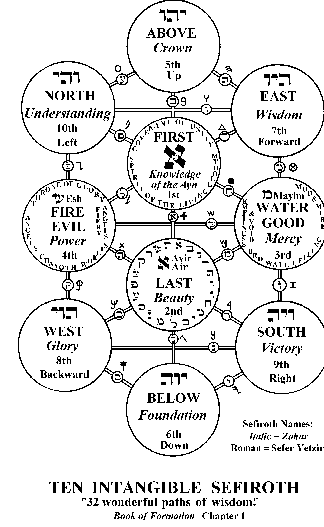
Conclusion In speaking of two "Faces," it must always be remembered that we are talking about an absolute unity that is only differentiated by human thought, and can only be directly experienced in higher states of consciousness. Generally, mystical traditions are very fluid and flexible in assigning gender to Vast and Small Face. In most mystical traditions, both Vast and Small Face can take either the masculine or the feminine gender. Within a particular tradition, one may find Vast Face referred to in the masculine and Small Face in the feminine, and/or vice versa. The two Faces may also be both masculine or both feminine. In the Qabalah, for instance, we find many references to the white-haired ancient father and the raven-haired youthful king. We also find the ancient mother and the maiden Shekhinah. In virtually all traditions, we can also find many impersonal names and references to Vast Face that are neither masculine nor feminine. However, Small Face, as the active principle, is always named and referred to personally as masculine and feminine. It is cogent to note that the Torah commands us to "Honor thy father and thy mother." While this is commonly understood to refer to one's earthly parents, its higher meaning enjoins us to honor our Divine Father and Mother. The great and beloved nineteenth century Bengali saint Sri Ramakrishna Paramahamsa offered several useful analogies to the relation between Vast and Small Face (static and active aspects of the Divine). These included the relation between milk and its whiteness, a gem and its sparkle, a flame and its power to burn, and the Sun and its rays. An old Vedic analogy compares God to a spider that spins a web from and retrieves it back into its own body. An analogy in Qabalah cites the relationship between the letters of the alphabet and the vowels: without the vowels (active aspect), the letters (inactive aspect) cannot be pronounced. In the Tantra, it is said that "without the vowels, Shiva's bones can't dance." Another analogy that illustrates the nature and relation of the two Faces is presented in the parable of the rope and the snake: "A man was walking down a road in the country at dusk. Just as he turned a corner, he encountered what appeared to be a large snake. His whole body gripped with fear, and without thought, he jumped back to avoid getting bitten. As he looked at the snake, he noticed that it wasn't moving. He picked up a rock and threw it at the snake, and still the snake didn't move. He thought, 'Perhaps the snake is dead.' This thought diminished his fear, and he inched closer to the snake to get a better look. As he neared the snake, he was amazed and relieved to find out that it wasn't in fact a snake at all: it was a rope that he mistook for a snake." In this story, there had to be a rope in the first place for the man to have mistaken it for a snake. The "snakiness" was a superimposition upon the rope that only existed in the man's mind. Such is the nature of the Creation, which is a collective illusion. The "snakiness" of Small Face is an illusion superimposed upon the reality of the "rope" of Vast Face. This illusion of a "difference within Itself" is a play of the Divine arising from an unfathomable whim.
28 notes
·
View notes
Text
Isso é uma carta de suicídio (?)
Eu tenho medo de morrer
Sempre tive, e sempre tive medo de admitir.
Negar nossos medos não os afasta, só os torna mais fortes.
Se você está lendo isso e sabe quem publicou, significa que eu morri.
Não sei dizer ao certo ainda o método do suicídio, mas essa ideia voltou com tanta intensidade à minha mente, que a maior surpresa seria se ela não se concretizasse.
Ademais, eu talvez tenha uma pequena ideia do método provável.
Eu não tenho apego a essa capa de carne que envolve meu sistema nervoso. Não tenho nem mesmo apego a esse sistema nervoso que sou eu.
O fogo purificará minha carne e exporá meus ossos, então no submundo, renderei meu coração ao deus da cabeça de Chacal para que ele seja testado contra a pena da verdade.
A única forma de voltar pra nossa verdadeira casa, o esquecimento absoluto do abismo de Ain, é através da morte
Não tenho medo do que pode acontecer após a morte. Não existe nada lá. Apenas a dor de morrer me assusta.
Eu tenho medo da dor
Existência é sofrimento
A morte é o fim de toda agonia
Somente ela pode me libertar
A grande dissolução, mahapralaya
Oblivion
Entropia
Ayn, o nada absolutto
Morte
Tantos nomes para o mesmo deus, o único que existe realmente.
Cronos, seu banquete se aproxima
Festeja sobre minha carne, deixa apenas meu peito vazio. O coração que habitava lá já foi tomado há muito tempo por olhos claros como a luz de Ain-Sof-Aur
Condena este universo ao profundo esquecimento, pois é a única coisa que essa existência maldita merece.
Eu não tenho muito ouro. O pouco que me é de direito, após minha morte, deve ser dividido entre meus irmãos.
Que Juno saiba que morri gostando dela, embora as consequências deste mundo nos tenham impedido de permanecer juntos.
Que a pequena sereia saiba que foi pra sempre especial na minha vida, e sinto muito por não conseguir corresponder ao seu amor em igual direção, com sentido oposto. Um sentimento com a força do seu amor foi algo que eu nunca mais experimentei nem de longe.
A moça de olhos claros e riso leve, que faça bom uso do meu coração, embora eu nunca O tenha conseguido fazer funcionar corretamente. Como o homem de lata, busquei sempre um substituto, porém sem sucesso.
Não há mágicos aqui de onde eu venho
À minha família, eu só posso dizer que sinto muito. Gostaria de viver um pouco mais a fim de organizar as coisas a fim de diminuir o impacto da minha partida, mas infelizmente isso não foi possível
O que está feito não pode ser alterado
1 note
·
View note
Text
Before She gave any shape to the world, before She produced any form, She was alone, without form and without resemblance to anything else. Who then can comprehend how She was before the Creation? Hence it is forbidden to lend Her any form or similitude, or even to call Her by Her sacred name, or to indicate Her by a single letter or a single point… But after She created the form of the Heavenly Man, She used him as a chariot wherein to descend, and She wishes to be called after Her form, which is the sacred name "YHWH".
In other words, "Ein Sof", or "Ayn Soph" signifies "The nameless being". Infinite, absolute, boundless, limitless and inefable light before the creation of our and every other Kosmos. In another passage the Zohar reduces the term to "Ein" (non-existent), because God so transcends human understanding as to be practically non-existent. In addition to the Sefer Yetzirah and the Zohar, other well-known explications of the relation between Ein Sof and all other realities and levels of reality have been formulated by the Jewish mystical thinkers of the Middle Ages, such as Isaac the Blind and Azriel.
Any name of God which is found in the Bible can not be applied to the Deity prior to His self-manifestation in the Creation, because the letters of those names were produced only after the emanation... Moreover, a name implies a limitation in its bearer; and this is impossible in connection with the "Ein Sof"
0 notes
Text
retroactivebakeries replied to your post “ive got the mind of a heretical 18th century kabbalah scholar and the...”
BEAGLE RABBI SAGA

me when my students ask me about individualized redemptions after 42 straight hours contemplating the ayn sof
14 notes
·
View notes
